The post Analyzing Pakistan’s Budget for FY2023-24 first appeared on Sindh Courier.
]]>By Salwa Khokhar
Pakistan and India gained independence at the same time, while China gained independence one year later than both the countries. However, it needs no comments what the situation prevails in Pakistan as compared to India and China.
There had been reports that Pakistan is on the verge of default. The question arises that after independence what steps we have taken to get rid of the factors or rectify the faults that have pushed the country to such a point?
Our biggest achievement so far is only nuclear power, and except that we are all losers as a nation.
Pakistan’s economic crisis worsened in recent months due to its close brush with shortages of forex and inflation. With inflation of about 40pc, people were seen queuing up for subsidized wheat flour, often turned riotous.
In this alarming situation, Federal Finance Minister Ishaq Dar presented Pakistan’s budget for the fiscal year 2023-24. While keeping the upcoming elections in mind, the government had claimed that the GDP growth rate would remain 5% this year, but the actual number turned out to be 0.29%. After GDP, the most important factor is Per Capita Income, which represents how much money a citizen of a country earns in a year. In Pakistan’s case, the GDP per capita for FY23 is $1568, which was $1760 last year. This drastic change shows us that the average per capita income of Pakistan has significantly reduced. The primary reason for this is rupee depreciation.
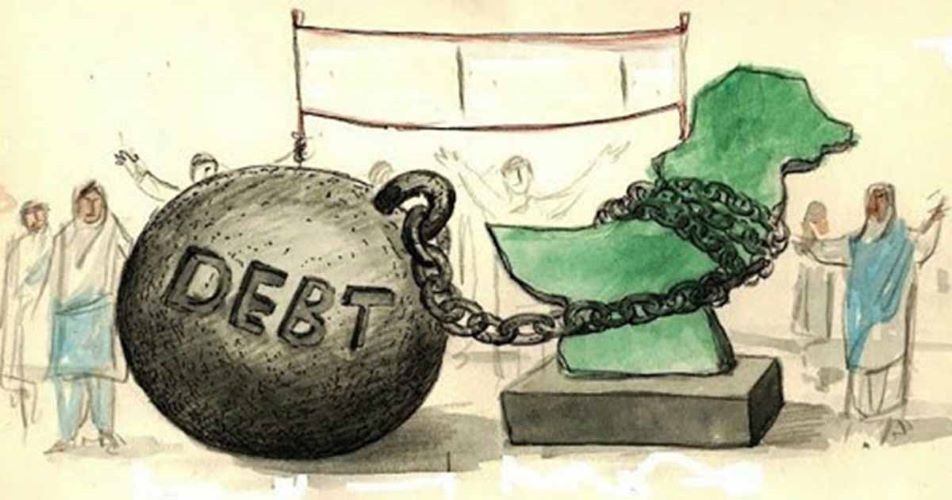 Rupee depreciation is also one of the considerable cause of inflation. The inflation rate for FY23 is 29.2%. This means that inflation is highest in Pakistan as compared to rest of Asia. Inflation rate for the past 5 years was:
Rupee depreciation is also one of the considerable cause of inflation. The inflation rate for FY23 is 29.2%. This means that inflation is highest in Pakistan as compared to rest of Asia. Inflation rate for the past 5 years was:
2019: 6.8%
2020: 10.7%
2021: 8.9%
2022: 11.3%
2023: 29.2%
In this inflationary era, an average Pakistani will have very little left from his income, so he will borrow money. In addition to this loan, he also has a public debt on him, which means that every Pakistani either male or female has to pay off a debt of 247862 at this time, Pakistan’s total income is 1263 billion while it’s total expenditure is 14461 billion.
Our primary financial burden is debt servicing, which entails repaying loans. Presently, our total debt servicing amount is to 7303 billion, signifying that 60% of our income is allocated towards repayment. After debt servicing, our largest expenditure is allocated towards defense spending. Pakistan is set to expand 1804 billion on national defense, which accounts for 14.8% of our total income, 60% of our income is spent on loan repayment and 15% is spent on defense. This means that 75% of our income is utilized for these purposes, leaving a mere 25% for other expenses.
The remaining 25% is allocated towards other expenses, including 4213 billion for salaries and government departmental allocation. The Pakistani government should spent the most on the Public Sector Development Program (PSDP), with only 950 billion being allocated by the government, which for 7.8% of our total income. In addition to this, budget deficit occurs due to excessive spending, beyond a shadow of a doubt, we will take loans to accumulate external debt in order to balance the budget deficit. We are going to borrow external loan of $24 billion this year, which is 114% more than last year.
Now let’s have a look at the sector that costs least. Government of Pakistan is going to only spend 1.7% of total GDP on the education sector. This tells us what our priorities are, where the world is competing with technology in modern knowledge and economy, and where they are advancing themselves in the field of education, and here we are reducing our education budget.
According to data, in Pakistan, there are 35000 shrines and only 300 universities but rather than investing a substantial portion in education, Pakistan is investing hefty amount on defense and buying expensive weapons.
We need to make radical changes in our country at institutional and national level, we need to revolutionize things, not just reform them. We also need to make our economy export-oriented to improve the conditions of our country as a whole.
___________
The writer is BBA student at Shaheed Zulfiqar Ali Bhutto Institute of Science & Technology, Larkana Campus having interest in politics and business.
The post Analyzing Pakistan’s Budget for FY2023-24 first appeared on Sindh Courier.
]]>The post EXPLAINED: Pakistan’s economic crisis and default risk first appeared on Sindh Courier.
]]>Aamir Latif
KARACHI, Sindh, Pakistan
Escalating political uncertainty, a balance of payment crisis, severely depleted foreign reserves, and increasingly grim prospects of external financing: Pakistan is presumably sitting on an economic powder keg.
The country has been engulfed by unrest since former Prime Minister Imran Khan was arrested earlier this month.
Arrests, court cases, and the future of Khan and his Pakistan Tehreek-e-Insaf (PTI) party dominate the daily news cycle, but beneath it all lurk persistent fears of a default, an eventuality with repercussions that would be felt far beyond the political realm.
Reports from local and international organizations warn that Pakistan’s economy is on the brink.
Ratings agency Moody’s downgraded the country’s credit rating in February, while more recently it said Pakistan could default as soon as June if it fails to secure an International Monetary Fund (IMF) bailout.
Islamabad has been negotiating with the IMF since early February for the release of $1.1 billion, part of a $6.5 billion bailout package that, ironically, was inked in 2019 by Khan’s government.
To meet the IMF’s stringent demands, Prime Minister Shehbaz Sharif and his coalition government have cut back on subsidies, removed an artificial cap on the exchange rate, mounted taxes, and hiked fuel and electricity prices.
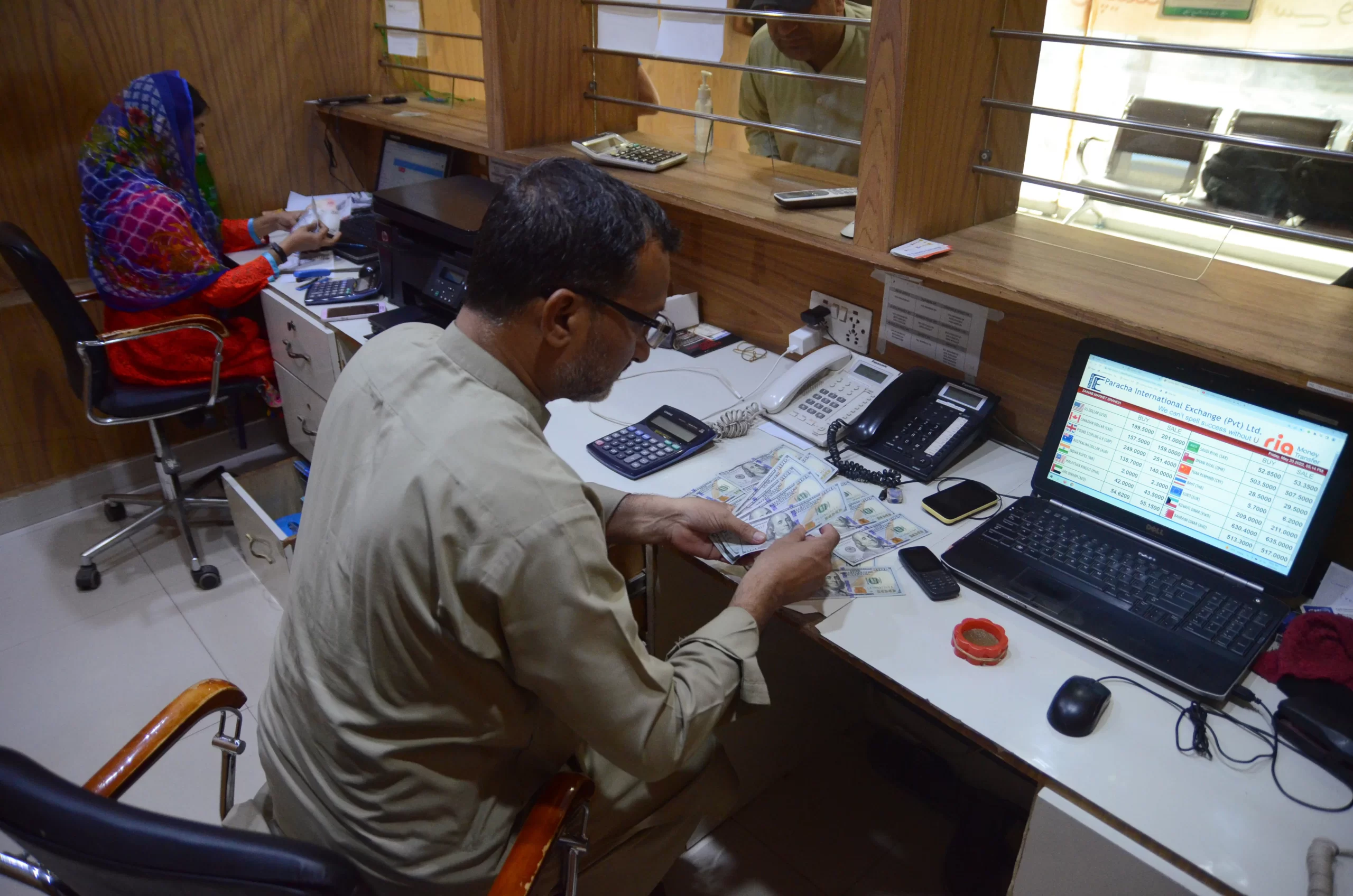 All of this as inflation soars, growth stalls, and what was once the strongest currency in the region has become the weakest, leaving the South Asian nation and its over 220 million people facing an economic crisis of exceptional proportions.
All of this as inflation soars, growth stalls, and what was once the strongest currency in the region has become the weakest, leaving the South Asian nation and its over 220 million people facing an economic crisis of exceptional proportions.
Damning figures
Pakistan’s severe economic spiral is characterized best by the skyrocketing rate of inflation – 36.4% in April, the highest in nearly six decades.
On the foreign reserves front, the country is left with a mere $4.3 billion, just enough to cover a month’s worth of imports.
To temporarily alleviate some of the financial strain, China rolled over a $2 billion loan in late March, while Saudi Arabia extended the term of a $3 billion foreign reserve deposit it made as a loan in 2021.
On the other side is the case of Islamabad’s external debt, which has plunged by over $10 billion. That has effectively reduced its current account deficit from July 2022 to this April to $3.3 billion, significantly lower than the $13.6 billion of the corresponding 2021-22 period.
That drop is because imports were pulled down to $47 billion between last July and this April, compared to $65.5 billion during the previous corresponding period, according to Shahid Hasan Siddiqui, an economist in the financial hub of Karachi.
However, this decline in imports has dented Pakistan’s manufacturing sector, exports, and subsequently, the already struggling GDP, which is teetering towards negative growth, he explained.
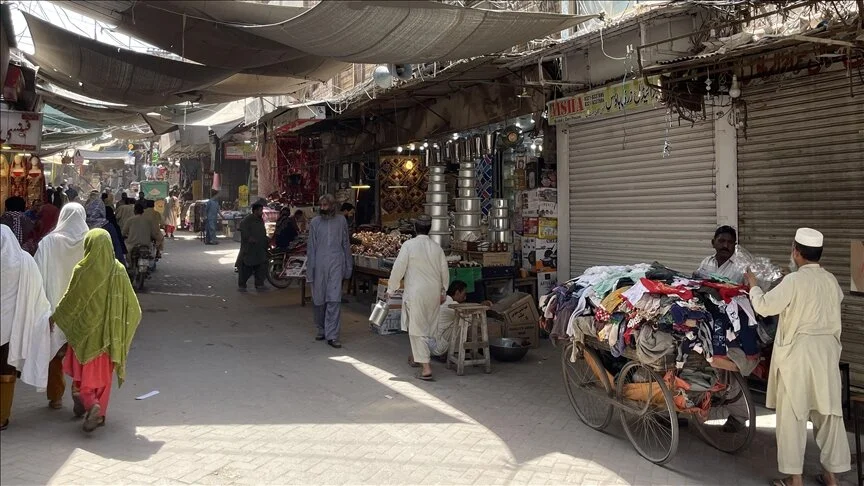 “Less imports of raw materials and machinery due to a shortage of foreign reserves affected the manufacturing sector and hit our capacity for exports,” he told Anadolu.
“Less imports of raw materials and machinery due to a shortage of foreign reserves affected the manufacturing sector and hit our capacity for exports,” he told Anadolu.
All bets on IMF
Other economists in Pakistan also feel the economy could tip over the edge, but reckon that the odds of a default in the near future are remote, particularly given the country’s nuclear status and the wider geopolitical situation in the aftermath of the Russia-Ukraine war.
To ease growing fears and lower the default risk, Pakistan has to somehow secure a deal with the IMF, said Khaqan Najeeb, an economist and former Finance Ministry adviser.
Along with the political tumult and external financing challenge, he cited “less than desirable economic management” as a key reason for Pakistan’s default risk.
“Pakistan’s options are limited, and without an IMF program, the default risk will stay elevated and the reserves weak,” he told Anadolu.
However, he said there are expectations that a staff-level agreement with the IMF could be sealed “in the next few days,” which would give Islamabad the funds required for external payments.
Ammar Habib Khan, a macroeconomist, shared Najeeb’s views, stressing that a deal with the IMF is “crucial” in terms of Pakistan’s ability to pay off foreign debts and prop up depleting foreign reserves.
In his view, the chances of Pakistan facing a default “immediately” are slim, but the outlook grows starkly grim for 2024.
“Pakistan can face a real challenge in terms of a default in April next year, when it has to handle $1.1 billion Eurobond payments to private investors,” he told Anadolu.
“If Islamabad doesn’t have enough reserves by that time, it will be in serious trouble.”
However, he feels that Pakistan has a lifeline in allies China and Saudi Arabia, who will continue to support Islamabad even if the IMF agreement is delayed.
Geopolitics at play
Despite the dismal shape of the Pakistani economy, Siddiqui, the Karachi-based expert, said the country will not default unless the government consciously chooses that path.
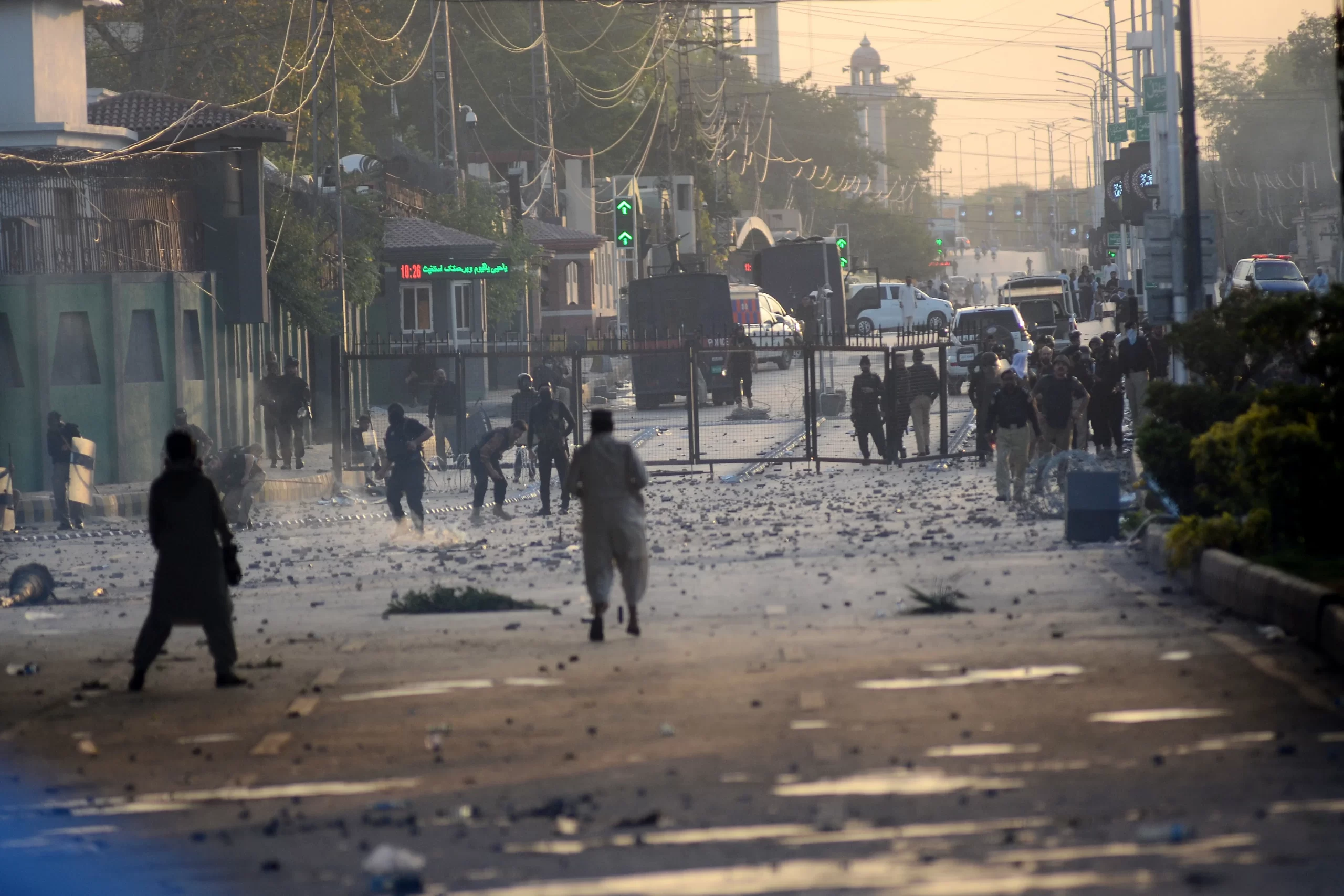 Shedding light on the interplay between economy and geopolitics, he said Pakistan’s economic stability is essential for the interests of world powers such as the US and China.
Shedding light on the interplay between economy and geopolitics, he said Pakistan’s economic stability is essential for the interests of world powers such as the US and China.
“Economy and geopolitics are interlinked. I don’t believe that global superpowers, mainly the US and China, can afford a default by Pakistan in the current geopolitical situation,” he opined.
He said the US and its Western allies would not want to see a nuclear-armed country default, especially after the Russia-Ukraine war.
“Washington also still needs Pakistan in Afghanistan and the Middle East, whereas Beijing, which is already facing criticism from the West over CPEC (China-Pakistan Economic Corridor) loans, simply cannot afford to see Islamabad default,” Siddiqui contended.
He was referring to the $64 billion CPEC project, part of Beijing’s ambitious Belt and Road Initiative (BRI), which aims to connect China’s northwestern Xinjiang province to the Gwadar port in southern Pakistan through a network of roads, railways and pipelines to transport cargo, oil and gas.
Washington, time and again, has said the project is “not sufficiently transparent,” claiming that it will saddle Pakistan with the burden of expensive Chinese loans.
Both Islamabad and Beijing reject the criticism.
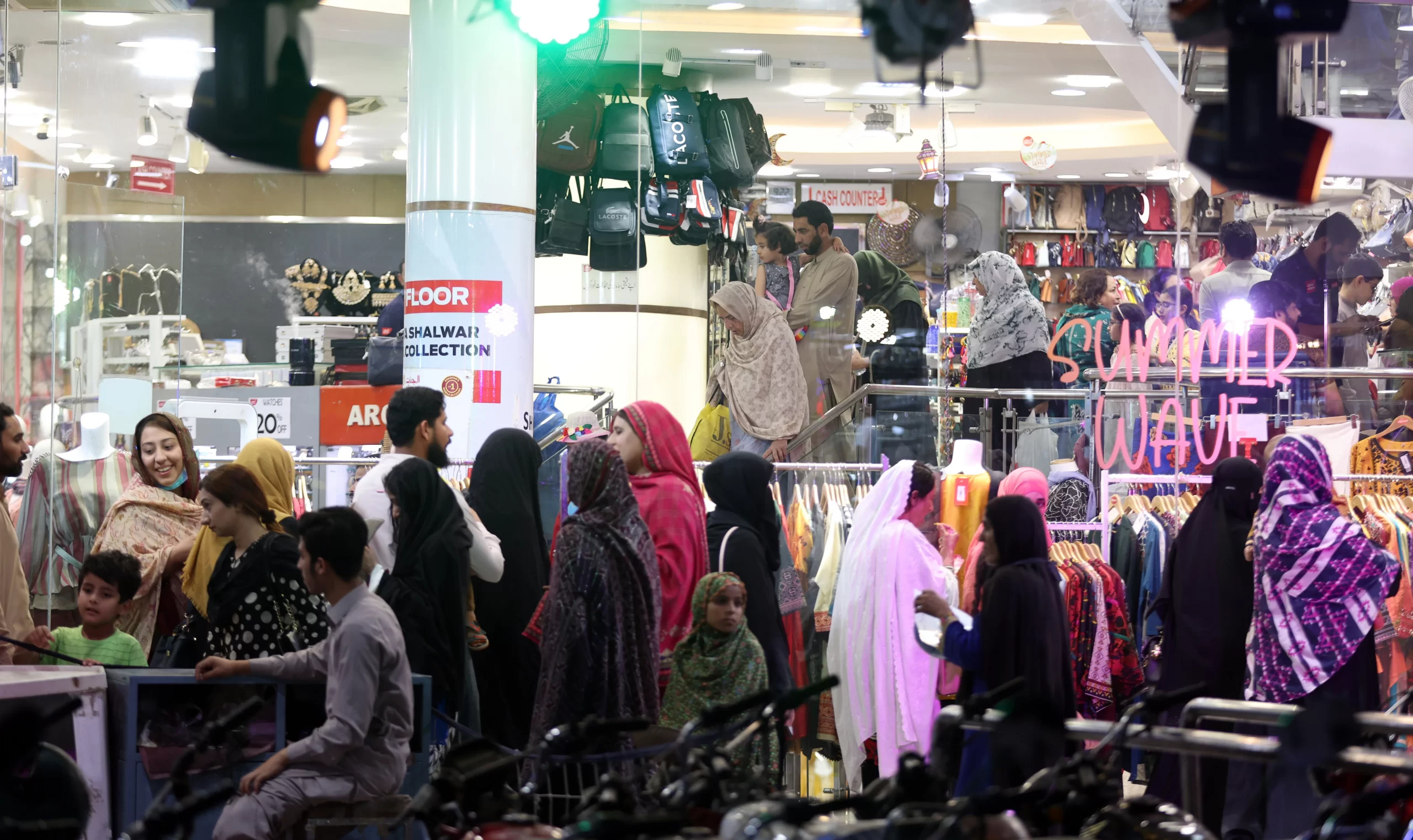 Pakistan currently owes an external debt of $125 billion, of which, nearly 25% is shared by China, according to official figures.
Pakistan currently owes an external debt of $125 billion, of which, nearly 25% is shared by China, according to official figures.
“If Pakistan defaults, the West will heap the blame on Chinese loans. In that case, the entire BRI could be affected,” Siddiqui asserted.
For him, Pakistan still has two alternatives to avoid default. The first is through local foreign exchange companies, which can provide financial support, and the second is the millions of overseas nationals who can contribute to the country’s financial stability.
_______________________
Aamir Latif is a senior journalist based in Karachi. He represents Anadolu, a Turkish news agency
Courtesy: Anadolu Agency (Posted on May 25, 2023)
The post EXPLAINED: Pakistan’s economic crisis and default risk first appeared on Sindh Courier.
]]>The post Charting a Path Forward for Pakistan! first appeared on Sindh Courier.
]]>Zaheer Udin Babar Junejo
The 20th century is widely recognized as a period of great change, marked by political, economic, social, and technological advancements. While many of these developments are viewed as positive, others have had a negative impact on our world.
The two world wars and the threat of nuclear weapons challenged the idea of human civilization. The rise of petro-Dollar economy led to the domination of oil as a source of energy and wealth, shaping the global economy in ways that have had both positive and negative effects.
At the same time, the 20th century was marked by a decline in religion and the rise of nationalism, which led to increased division and conflict. The increasing focus on material wealth and fashion has replaced traditional values, leading to a decline in community and family ties.
However, it is important to recognize that these events are not just a simple case of distinction or development, but rather the result of the complex interplay between various factors. As we move into the 21st century, it is essential that we recognize these challenges and work towards creating a world that is more equitable, sustainable, and peaceful for all.
We need to take the lessons from the past and use them to create a better future for all people. This means valuing and protecting our natural resources, promoting social equality, and fostering respect for diversity and human dignity. By doing so, we can create a world that is truly distinguished by its development and progress.
It is crucial that we recognize the challenges, we as a nation are facing, today is the time to play our part to create a more just and equitable society. Despite the advances in technology, it seems that we have failed to use it to improve the quality of life for all citizens. The promotion of hate and division by the media, coupled with the lack of care and concern for the greater good of the nation, has resulted in an environment of uncertainty and self-interest.
This has had a significant impact on our ability to build and sustain strong institutions, which are crucial for the development and progress of any nation. We must take immediate action to address these issues and work towards creating a better future for all people in Pakistan. This means promoting unity and respect for diversity, strengthening institutions, and focusing on the greater good, rather than our own selfish interests.
___________________
Zaheer Udin Babar Junejo is Community Development Professional based in Hyderabad.
The post Charting a Path Forward for Pakistan! first appeared on Sindh Courier.
]]>The post Pakistan Economic Crisis – Lessons for India first appeared on Sindh Courier.
]]>Prof. Dr. Ram Puniyani
Pakistan is in the grip of a massive economic crisis. Wheat flour costs Rs.150 per kg. Staple diet roti (type of bread) costs Rs.30 in a country where the average daily earning is Pakistani Rs.500 with an average household needing around 10 rotis daily. The US dollar is close to Rs.230.
Summing up the economic plight of Pakistan, John Ciorciari, professor at Michigan’s School of Public Policy, says, “Pakistan faces a severe economic crisis and clearly requires external support. Foreign exchange reserves are at dangerously low levels—enough to pay for only a few weeks of imports. Inflation is at its highest levels in decades, growth is sagging and the central bank has raised interest rates sharply to address a weak currency.”
Undoubtedly, the worsening situation has been partly precipitated by the massive floods. Besides, the economy’s basic structure has been on a weaker wicket with military dominance, ‘Islam in politics’ and the US influence.
At the time of Independence, Pakistan’s first governor general Mohammad Ali Jinnah gave one of the best definitions of a secular state during his August 11 Constituent Assembly speech. “If you change your past and work together in a spirit that every one of you, no matter to what community he belongs, no matter what relations he had with you in the past, no matter what his color, caste or creed is first, second and last a citizen of this State with equal rights, privileges and obligations, there will be no end to the progress you will make,” he said.
Undoubtedly, the worsening situation has been partly precipitated by the massive floods. Besides, the economy’s basic structure has been on a weaker wicket with military dominance, ‘Islam in politics’ and the US influence.
This principle was not to last long, and the fundamentalist elements around him took over after his death. Persecution of Hindus, Christians, and Shias and Kadianis (sects of Islam) began over a period of time. ‘Religion in politics’ dominated the scene, the basic infrastructure of agriculture and industry remained on the margins, and health and education were accorded a low priority.
Roughly, the domination of the military and fundamentalism in politics had different priorities and it seems that they are one of the major factors in the State’s inability to cope with the economic challenges.
No two cases are exactly similar; still, some generalizations can be drawn. In the case of Sri Lanka, ethnic and Sinhala-Buddhist politics were in the driving seat. Hindu Tamils were the first target, followed by the persecution of Muslims and Christians. The military was in a dominating position and the autocracy’s high-handed decisions like spending the nation’s fortune on the Rajapaksa Airport, near Hambantota Port, and stopping the import of fertilizers led to the big disaster eight months ago.
The food crisis and the rising prices led to the uprising. Sri Lanka did begin as a democracy, but the pressure of ethnic (also overlapping religious) issues dominated the scene to disenfranchise the Hindus (Tamils) and others in due course.
Roughly, the domination of the military and fundamentalism in politics had different priorities and it seems that they are one of the major factors in the State’s inability to cope with the economic challenges.
Rohini Hensman, a scholar-activist of Sri Lankan origin, gives a comprehensive account of the roots of the ethnic-religious divide on which major political parties harped. In due course, this gave rise to the anti-people, autocratic regime of Mahinda Rajapaksa and Gotabaya in particular. (Rohini Hensman, Nightmare’s End, June 13, 2022, New Left Review). Interestingly, Sri Lanka also went in to trace the ancestry of its poverty-stricken citizens through documentary proof.
In India, communal elements boast that the country is not facing such a crisis due to the leadership of Narendra Modi. Surely, the crisis in India is not of the same proportion as in Pakistan or Sri Lanka.
Still, the rising prices of commodities are breaking the back of the poor and even the middle class—to which the Union finance minister also claims to belong. The Indian rupee has seen a free fall against the dollar and stands at Rs.83 against the greenback.
Unemployment is at an all-time high and GDP is on the lower side. Oxfam’s report ‘Survival of the Richest: The India Supplement’ shows the widening gulf between the rich and poor.
Muslims and Christians are under constant intimidation and marginalization, best reflected in what India’s outstanding former police officer Julio Ribeiro said, “Today, in my 86th year, I feel threatened, not wanted, reduced to a stranger in my own country. The same category of citizens who had put their trust in me to rescue them from a force they could not comprehend has now come out of the woodwork to condemn me for practicing a religion that is different from theirs. I am not an Indian anymore, at least, in the eyes of the proponents of the Hindu Rashtra.”
In the 80s, communalism reared its head in a powerful way. Now, it has become the most dominating political factor
In contrast to its two neighbors, India began on the solid wicket of secularism and focused on industries, irrigation, fertilizers, health facilities (primary health centers) and education. It also endeavored to set up premier institutes of higher education, IITs, IIMs along with research institutions which could compete globally—BARC (1954), DRDO (1958) and INCOSPAR [later ISRO] (1962), among others.
Undoubtedly, there were some flaws in the initial planning like an overemphasis on heavy industries and higher education; still, solid infrastructure was laid. Scientific temper was mandated even through the Constitution.
In the 80s, communalism reared its head in a powerful way. Now, it has become the most dominating political factor, leading to a downslide in most areas irrespective of the claims about Achche Din and Sabka Saath Sabka Vikas.
In the last eight years, GDP tanked from 7.29% to 4.72%, average unemployment rose from 5.5% to 7.1%, cumulative NPAs increased from Rs.5 lakh crore to Rs.18.2 lakh crore and the rupee drastically weakened from 59 to 83. The attack on scientific temper is becoming stronger.
In post-colonial South Asia, the British, who ruled and plundered the region, also sowed the seeds of ‘divide and rule’ by dividing the Hindus and Muslims or Sinhalese and Tamilians. Partition was the result of this policy.
India embarked on the path of a modern nation-state while Pakistan soon fell into the grip of divisive politics. While earlier many Pakistanis looked up to India as a role model, India seems to be following its path for the last three decades. As the late Pakistani poetess Fahmida Riaz in the aftermath of the Babri Majid demolition so aptly put, “Tum Bilkul Hum Jaise Nikle (You turned out to be like us)”.
___________________
The author is a human rights activist and taught at IIT Bombay. The views are personal.
(Article shared by the author on Jan 23, 2023 through Jan Vikalp, a bilingual (Hindi-English) Online Forum of writers, academicians, editors, intellectuals and social workers)
(First published by News Click on Jan 21, 2023)
The post Pakistan Economic Crisis – Lessons for India first appeared on Sindh Courier.
]]>The post ‘Default’ is a curse word for Pakistanis first appeared on Sindh Courier.
]]>Nazarul Islam
As in the preceding year, ‘Politics’ is most likely expected to consume the lion’s share of Pakistan’s time and attention in the current year 2023. The country’s unfortunate turn to economic instability last spring, had failed to cease, with the melodramatic, no-confidence vote in parliament last April. The event only managed to ‘oust’ the inexperienced Pakistani Prime Minister Imran Khan, from his office.
Instability and polarization have only heightened in this country, since April 9, 2022: Imran Khan has led a popular opposition movement against the incumbent coalition government and the military staging a series of large rallies across the country through the year.
Power struggle in Pakistan has been allowed to continue into 2023. While the incumbent government has not ceded to Khan’s demand for early elections, country-wide elections are constitutionally mandated to be held by October this year. Obviously, the situation has been a windfall for the weak and unstable government politically, to hold popular Imran and his followers off as long as it possibly can. Perhaps a last ditch effort could be manipulated after it tries to dig itself out of Pakistan’s urgent economic crisis and its lackluster domestic performance (its diplomatic foreign policy approach has fared better, but that may not matter for elections).
Pretty much, the previous year has cost it tremendously, in the shape of its dwindling political capital. Imran Khan political party PTI did exceedingly well in a set of by-elections held in July and October. The state organs following ‘advice’ of the army, tried to mire Imran Khan and his party in legal cases, relying on a familiar playbook used against opposition politicians in Pakistan, albeit to limited effect, with the courts’ involvement.
Imran Khan’s party, the PTI still controls two of Pakistan’s four provinces, Punjab and Khyber Pakhtunkhwa (KP), and the incumbent federal government’s (extra-legal) ‘efforts’ in order to wrest power from it in Punjab, the largest province, have been unsuccessful (thanks to the courts). The year is off to a dramatic start, with Khan’s party initiating the process to dissolve the Punjab and KP assemblies this month to pressure the federal government into early elections.
‘Politics’ is most likely expected to consume the lion’s share of Pakistan’s time and attention in the current year 2023.
And….for the politically obsessed Pakistan, the biggest question remains who will win the next general election. Will former Prime Minister Nawaz Sharif (brother of current Prime Minister Shehbaz Sharif) return to Pakistan to run as the head of his party, the PML-N? Can Imran Khan win on the strength of his popular support, despite his confrontation with the military?
Whatever the outcome, the Pakistani diaspora in the US can say only so much—given the histories of the main contenders: The direction of the country is most likely will not result in any change.
For months, Pakistan’s economy has been in real doldrums—even predating the summer’s catastrophic floods. Inflation is now backbreaking for its middle and poor classes. Pakistani currency has not stopped falling in value, as it rolls down a steep precise. And the foreign reserves have been allowed to drop down to it’s unbelievable, precariously low level of $2.3 billion, enough to cover two weeks’ worth of imports, raising the possibility of certain default. Certainly, ‘default’ is a curse word in the country, to be uttered in public. No one wishes to hear this. It echoes piercingly into human ears, and unfolds the dire optics of Sri Lanka, in mind.
Pakistani politicians bestow serious addiction to crisis of all varieties—the most prominent among the love affairs, being the economic crisis. The cycle visits the country around every few years, borne out of an economy that doesn’t produce enough and spends too much, and is thus reliant on external debt. Each successive crisis is worse as the debt bill gets larger and payments become due.
In the perilous year 2022, which ended a few days ago internal political instability and the flooding catastrophe have worsened it. There is a significant external element to the crisis as well, with rising global food and fuel prices in the wake of Russia’s war in Ukraine. The combination of all these factors has spelled perhaps the greatest economic challenge Pakistan has ever seen.
Pakistan has a commitment to return back $73 billion by the year 2025, to debtors. Will the country be able to do so without debt restructuring? Or, anything for that matter?
And yet, the government has been mired in politicking, and the release of a $1.1 billion loan tranche from the International Monetary Fund (IMF) remains stalled, (read shut) as Islamabad has definitely pushed back the IMF’s conditions. To appease to the key lenders, Pakistan’s ruling politicians noted for corruption and notorieties, while holding public offices have now resorted to limiting imports and shutting down malls and wedding halls early. These are but petty, cosmetic measures that is bound to fail, therefore cannot adequately address the problem.
Again, this country may end up avoiding default for the time being with IMF help and loans from friendly countries, particularly their traditional savior, Saudi Arabia and other Gulf nations. However, this time the financial assistance from them is unlikely to address the clear underlying malaise of the economy – and the fact that something fundamentally will need to change, in terms of how much the economy produces versus how much it spends, to avoid ‘default’ prospect looming on Pakistanis.
Without an iota of doubt, Pakistan’s ruling political parties seem to have neither the political will, nor ability to bring about such change.
Pakistan has a commitment to return back $73 billion by the year 2025, to debtors. Will the country be able to do so without debt restructuring? Or, anything for that matter?
_________________
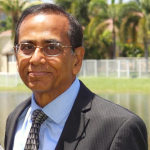 The Bengal-born writer Nazarul Islam is a senior educationist based in USA. He writes for Sindh Courier and the newspapers of Bangladesh, India and America. He is author of a recently published book ‘Chasing Hope’ – a compilation of his articles.
The Bengal-born writer Nazarul Islam is a senior educationist based in USA. He writes for Sindh Courier and the newspapers of Bangladesh, India and America. He is author of a recently published book ‘Chasing Hope’ – a compilation of his articles.
[The views expressed by the author are his personal and do not reflect the editorial policy of Sindh Courier]
The post ‘Default’ is a curse word for Pakistanis first appeared on Sindh Courier.
]]>The post Observations of an Expat: Latin Fandango first appeared on Sindh Courier.
]]>By Tom Arms
South America is in a mess. The problems stretch from Patagonia to Cartagena and further north into Central America and Mexico.
Almost everywhere there is violence, political instability and economic problems.
The main spotlight has been shone on Brazil. The Portuguese-speaking nation is the economic giant of South America. Its GDP is four times the next largest Latin economy and the eighth largest in the world. Brazil has tremendous potential and political problems.
It is deeply divided after left-winger Luiz Inacio da Silva (aka Lula) narrowly defeated right-wing populist Jair Bolsonaro in October elections.
Bolsonaro and his supporters has claimed the elections were rigged and demanded a re-run. Thousands of Bolsonaristas (as they are called) stormed government offices in the capital Brasilia including Congress, the Supreme Court and the presidential palace. 1,200 have been arrested.
But the real problem is not the validity of the elections but the deep divide between Brazil’s political left and right. Conservatives, which include the military, police, middle classes and growing Christian evangelical movement, view Lula as a crypto-communist set on destroying Brazilian democracy and taking their country down the path of Cuba or Venezuela. Bolsonaro’s opponents worry that he will return Brazil to a military dictatorship.
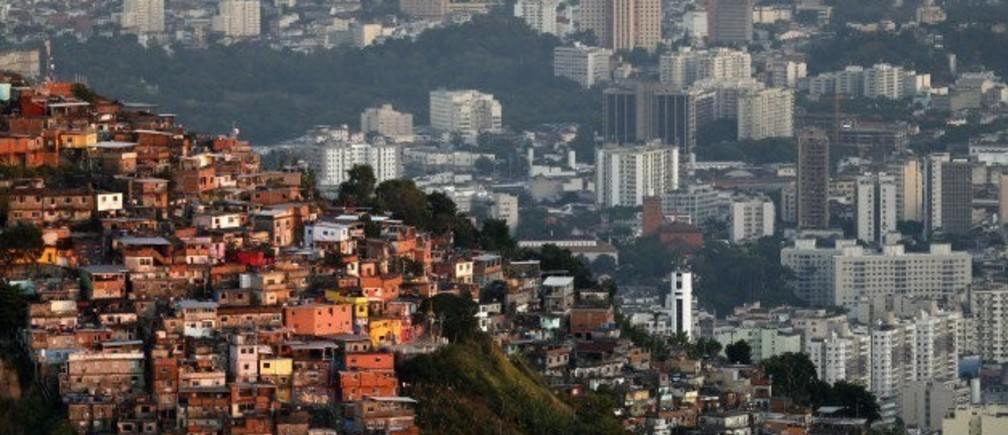
To the south, Argentina is suffering another bout of Peronism and a division at the top of the country’s political structure. President Alberto Fernandez and Vice-President Cristina Fernandez de Kirchner simply don’t speak to each other. On top of that, Ms. Kirchner has been convicted of fraud totaling $1 billion.
The resultant political vacuum and distractions at the top of the Argentine political tree, coupled with Peronism’s irresponsible spending has left the country with a crippling debt and 100 percent inflation rate. Thirty-seven percent of the country live below the poverty line.
Then there is Peru. In one week in 2020 Peru had three presidents in only five days. Exactly who is the current president is open for debate. Left-wing ex-school teacher President Pedro Castillo was arguing with his right-wing Congress. So he dissolved it and declared a state of emergency.
A raft of ministers resigned and Congress impeached President Castillo, threw him into jail and swore in Vice-President Dina Boularte as his replacement. From his jail cell, Castillo maintains he is the rightful president, as did the scores of rioters who died in the past month demanding Castillo’s release.
The war in the Ukraine has provided a reprieve of sorts for Venezuela’s beleaguered Nicholas Maduro. It has pushed up the price of the country’s only major export—oil, and forced Washington to improve relations. Inflation is dropping but is still at 156 percent a year. In 2021 it averaged 686.41 percent.
In neighboring Colombia, former guerrilla fighter Gustavo Petro faces challenges from the left and right. He switched from the armed struggle to peaceful politics when FARC signed a peace deal with the government in 2016. But other guerrilla groups have remained in the field under the banner of the National Liberation Army. The government has been holding talks with the rebels in Mexico, but so far the results are disappointing.
At the same time, President Petro has angered the Colombian right by increasing welfare spending and raising taxes for the wealthy. Recently there was an attempted assassination of Vice-President Francia Marquez, Colombia’s first Black woman vice-president. It is not clear whether the bomb was planted by extremists on the right or the left, but she rose to prominence as an environmental activist fighting illegal mining activities.
Forthcoming elections in Paraguay have a surprising international dimension. Paraguay is the only South American country to have full diplomatic relations with Taiwan. Its recognition of the island country has been a long-standing policy of the country’s dominant right-wing Colorado Party. But Paraguay’s beef and soya farmers want access to the Chinese market so opposition Liberal Party candidate Efrain Alegre has promised to break with Taipei and forge links with Beijing.
Both Taiwan and Mainland China are pouring money into the campaigns of the opposing parties and elections will be held on 30 October.
A bit further north in Central America there are endemic problems of civil war, gang warfare and drug-related political corruption in Panama, Nicaragua, El Salvador, Honduras, Guatemala and Mexico. The stand-out island of stability and prosperity is Costa Rica.
Political instability anywhere provides opportunities for exploitation by outside powers. In the case of South America, there is talk of Chinese naval facilities in Tierra del Fuego and Panama. Both Russia, Iran and China have close ties with Nicholas Maduro.
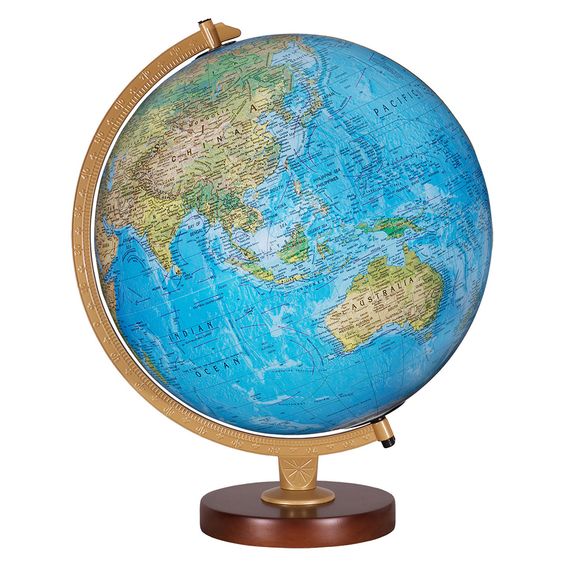 World Review
World Review
The Kevin McCarthy election fiasco will have far-reaching consequences for Speaker McCarthy, Donald Trump, the Republican Party, the conduct of US government and the rest of the world. Let’s start with Mr. Trump. He endorsed Mr. McCarthy. The “Never Kevins” in the far-right Republican Freedom Caucus ignored him. The voters ignored his key endorsements in the mid-term elections. Trump’s star is still in the firmament, but on the wane.
Now for the Republican Party. The battle to secure McCarthy’s election exposed a split. A small group of 20 right-wing extremists were able to delay and nearly blocked the election of Kevin McCarthy against the wishes of 202 of their party colleagues. They have also wrung key concessions out of the Speaker. The Freedom Caucus have discovered power. They will use it.
What are these concessions and what impact will their implementation have? First of all, if any one member of Congress does not like something that Speaker McCarthy has done they can table a vote to remove him. At the very least, this has the potential to seriously disrupt and delay congressional business. . This means that McCarthy will be much more politically circumspect then he might have been otherwise.
Next, the Speaker has agreed to give more time to debate and amend legislation on the floor of the house. The Freedom Caucus are also known as “Disrupters” and they are particularly keen on disrupting or blocking any spending bills, especially those related to Ukraine and foreign aid. And if it means stopping the machinery of government, then, according to Freedom Caucus members, so be it.
The British NHS is not the only European health service with problems. The French are also wringing their medical hands. The problem? Not enough staff and—as in Britain—the looming threat of strikes. As the New Year dawned some Paris hospitals reported 90 percent of staff reported sick in protest at working conditions. The country’s second largest health union has called for an “unlimited walkout” of nurses followed by a strike by GPs.
President Emmanuel Macron is throwing money at the problem but so far it is not working. Forty percent of French nurses are planning to leave the profession this year despite an extra $10 billion wage package. Wannabe doctors are being offered a $50,000 golden handshake to enter the profession.
The French desperately needs them. Rural areas are especially short of medical staff, some communities have been without a doctor’s surgery for several years and the situation is only likely to worsen as about half of the French doctors are over 55 and fast approaching retirement age.
There is a stand-out villain in Prince Harry’s book “Spare”—the press, especially Britain’s tabloid newspapers. I, in common with most of the public, have some sympathy and understanding with Harry’s views especially as one of the worst elements of the tabloids—the paparazzi played a major part in his mother’s death.
But the Duke of Sussex and his supporters ignore some basic facts: Newspapers are businesses. They are also a crucial element in any democratic society. Furthermore, the more successful they are as a business the greater their degree of freedom, which in turn is good for democracy. To make money and be free they must give the public the news that they want to read. The public wants to read about scandal and rows, especially if they involve the world’s most famous Royal Family.
And, of course, the Royal Family, needs the press. If the media stop reporting their activities they become an irrelevancy. Prince Harry should realize all the above. His book is making a fortune on the back of royal tittle tattle which tabloid readers love. And his willingness to lift the royal veil has swung the media spotlight firmly in his direction.
Yevgeny Prigozhin, head of Russia’s notorious Wager Group won two major awards last year: The title of “Hero of the Russian Federation” and the “Corrupt Person of the Year Award.” The first was presented to him by his friend Vladimir Putin and the second by the Organized Crime and Corruption Reporting Project.
The shadowy private army which is the Wagner Group is playing an increasingly important role in the Ukraine War. Officially, there are no private armies in Russia. They are against the law. Unofficially, the Wagner Group has become Putin’s privately-controlled army beyond the reach of legal niceties and ministry of defence bureaucracy. As well as Ukraine, the Wagner Group operates in Syria, Libya and Mali. Wherever it goes, it leaves a trail of rape, murder and a raft of other war crimes.
This is not surprising given that its ranks are filled with convicts. Of the 50,000 Wagner mercenaries currently in Ukraine, 40,000 of them were in prison cells a few months ago. These hardened criminals are ruthless and they are achieving results. It appears that this week they have gained control of the Ukrainian town of Soledad. The town is the center of Ukraine’s salt mines which can provide protected ammunition dumps and 200 miles of tunnels to infiltrate soldiers behind Ukrainian lines. But more importantly, the capture of Soledad provides Putin with a much-needed PR boost. Yevgeny Prigozhin may be in line for an oak leaf cluster for his Russian hero medal.
____________________
 Tom Arms is foreign editor of Liberal Democrat Voice and the author of “America Made in Britain”.
Tom Arms is foreign editor of Liberal Democrat Voice and the author of “America Made in Britain”.
The post Observations of an Expat: Latin Fandango first appeared on Sindh Courier.
]]>The post Old Wine in New Bottle first appeared on Sindh Courier.
]]>This idiom explores the reality of Pakistan in every appearance. Compared to its neighboring or nearest counties, Pakistan has been going to bottom for many years. Pakistani people are showing themself as modernized people, but actually they are at decline in every sphere of life.
Certain reports suggest that 92% Karachi people consider themselves living in the modern world, but just considering doesn’t matter. Struggle and hardworking leads to progress. Every next country is stepping into the train of welfare, but unlikely Pakistanis are busy to wear fashionable costumes without improving their body and structure. It is actually porous development which is not going to be lasting one.
Pakistan has been facing numerous issues like downfall in economy, escalating poverty, lawlessness and inflation etc. In many parts of Pakistan, economic development and job opportunities are very limited and those are the main reasons for migration. The migration for economic reasons in Pakistan has found in different aspects like migrating for career growth or for job search. Similarly, social migration takes place for relocating in search of better life or to be near to family and relatives. Moreover, political migration has been observed in situations where the person escapes adverse scenarios like war or political persecution.
Currently, economic crisis is ongoing that has created severe challenges for poor as the prices of food, gas, oil and all other daily use commodities have risen up. Pakistan should prioritize resolving this issue besides focusing on improving the livability of its cities and provide approach to quality public services such as affordable housing, potable water supply and other public services.
Pakistan’s reins are drawn by multiple riders who are inventing new ways to drown it. Rulers are filling their abdomen and doing corruption while the society is drifting to barbarism. This is due to misleading, very poor educational system, and totally failed democracy.
All these crises lead to dark future and destruction. These wild rulers have written the destiny of the innocent people of Pakistan. The poor have been getting poor and the wealthy people getting wealthy day by day, as these rulers never want to see the country as a developed nation. There seems no end to such a situation. With the change of rulers last year, the people had expected a change but the so-called new rulers proved to be ‘Old Wine in New Bottles’, as their policies continue to be the same – the anti-poor.
Ashfaque Ali Zardari
Nawabshah Sindh
The post Old Wine in New Bottle first appeared on Sindh Courier.
]]>The post Economic Crisis: Appeal to politicians to play a key role first appeared on Sindh Courier.
]]>The country is about to bankrupt. We are left with just $6.7bn dollars in foreign exchange reserves. Stock market is going down day by day. Companies are shutting down their productions like recently Toyota has shut down its production. Reportedly, some other automobile manufacturers have also halted the production. There are also more companies which are closed now a days for example Airlift, Vava cars etc.
In this whole critical economic condition, a tug of war continues among the politicians. The politicians are still threatening one another that if you won’t announce elections, they will dissolve assemblies of Punjab and K.P.K rather than working together to improve economic condition.
I hereby appeal to the politicians to play a key role to lift up the economy because it’s on the last leg.
Ghulam Muttaqa Shah
Sukkur IBA University, Miani Road, Sukkur
***
Acknowledge the Importance of Female Education
Is a human complete without being educated? Education is a main source to live life, which is basic right of both male and female. But our society is not accepting females to get education. Females are struggling against the harmful social norms and gender discrimination, which also lead them to start “Aurat march” campaign against our society, to get their fundamental rights. The dominancy of male in our society is like a strong wall behind the efforts of women, that’s why their rights are denied. If every women will get basic education it can brought many changes in our society which include: rapid increase in literacy rate, improvement in human development, and this curse like gender discrimination can be abolished. To end up, if our society can acknowledge the efforts of women, and sparking nationwide debates about the rights of women, which are entitled. Thus, a women can also get their equivalent rights and can lead our nation to the way of development.
Zubair Ahmed Ghumro
Sukkur IBA University
The post Economic Crisis: Appeal to politicians to play a key role first appeared on Sindh Courier.
]]>The post Global starvation looms as food price rises intensify first appeared on Sindh Courier.
]]>By Fiona Broom
The world is experiencing its third major food crisis this century. Can food systems become more resilient to shocks? Fiona Broom investigates.
Rises in staple food prices around the world are pushing family budgets to breaking point, a SciDev.Net investigation has revealed, as millions of people teeter on the brink of starvation.
While gathering food price data at markets, supermarkets and independent stores across the global South, SciDev.Net recorded major spikes in everyday staples. When compared against median annual salaries, the cost of a basket of food makes alarming reading.
One year ago, US$150 was enough for Egyptian government employee Abdel Moneim Mahmoud to meet the basic food needs of his family for a month. Now, Mahmoud’s food bill has risen to US$260.
“My monthly income was divided between securing food needs, paying utility bills such as electricity, water and gas, and saving part of it to meet health emergencies and secure school and university expenses for my children,” Mahmoud, 56, tells SciDev.Net.
“But the significant rises in food prices confused the family budget, and one income was no longer sufficient. I had no choice but to look for additional work to meet the monthly obligations.”
The head of the UN’s World Food Program, David Beasley, says the world faces a looming threat of mass starvation and famine. “We are facing a global emergency of unprecedented magnitude,” he warned, highlighting the combined repercussions of climate change, conflict, and COVID-19.
The world’s most vulnerable communities are experiencing some of the highest food prices this century, and this trend is expected to continue into 2023. Families are being forced to reduce their diets as food price inflation hits household budgets.
Nutrition specialists say they are already seeing the knock-on effect of malnourishment in children, with women and girls particularly at risk. In 2021, at least 150 million more women than men experienced food insecurity and this gap is growing, according to analysis by the humanitarian organization CARE.
“Some days my husband and I eat just once because we prefer our children don’t go to bed with their stomachs empty. I can’t buy enough food for them at these prices.”
Rosa Márquez, street vendor in Lima
Even before the food crisis hit, the World Bank’s Global Economic Prospects report shows that households in developing countries spent an average 40 per cent of their income on staple foods – while national figures show that food cost families in the United States and the United Kingdom around ten per cent of their budgets. Now the World Bank warns that “stubbornly high” food price inflation in the global South is leaving communities at risk of worsening food insecurity and malnutrition, while “food price surges of the same magnitude have been associated with tens of millions more people falling into extreme poverty in low-income countries”.
What’s driving the crisis?
The global financial crisis of 2007-2008 had a major impact on food prices that continues to be felt today. From 2006 to 2008 the United Nations’ Food and Agriculture Organization (FAO) reported a 60 per cent increase in the world food price index – the FAO’s measure of the monthly change in international prices of a food basket containing meat, dairy, cereals, vegetable oils and sugar.
Similar price volatility was seen in the 2010-2011 crisis – which was fuelled by failed harvests and high fossil fuel costs, and precipitated social unrest around the world – while the food price index jumped almost 40 per cent from 2020 to September 2022.
A complex web of factors now grips global food markets.
Shutdowns during the COVID-19 pandemic and economic recessions have left cash-strapped governments in the global South with little ability to respond to new crises. Climate disasters have damaged food production in almost every region of the world, while farmers face soaring energy costs and fertilizer shortages. And conflicts in Europe, Africa and the Middle East have affected global food supply chains.
Communities in 19 regions that are already experiencing acute food insecurity – known as ‘hunger hotspots’ – are likely to face even tougher conditions going into 2023, the FAO and the World Food Program warn. People are facing starvation in Afghanistan, Ethiopia, Nigeria, South Sudan, Somalia, and Yemen, with 222 million people in 53 countries and territories expected to need urgent assistance.
Most of the world’s food needs are met by four staple crops – wheat, rice, maize, and soybeans. These crops are highly fertilizer dependent and account for the majority of global intake of calories. Nitrogen, phosphorous and potassium are the primary nutrients in fertilizers: all are derived from fossil fuels and require large amounts of energy to process.
While international prices for wheat and other staple foods have come down after the spike that followed Russia’s invasion of Ukraine – two of the world’s biggest wheat producers – the International Food Policy Research Institute (IFPRI) warns that it would be premature to conclude the global food price crisis is near an end. “Domestic food prices for consumers continue to rise in most countries,” the IFPRI said in a September analysis.
After a brief pause in the price rise for fertilizers over the northern hemisphere’s summer, fertilizer prices are rising again. High fossil fuel energy costs in Europe have curtailed fertilizer production there, with the World Bank forecasting the continent will become a net importer of fertilizer and put further pressure on global markets. All major fertilizer exporters – led by Russia, China, Canada and Morocco – have limited stocks available, the World Bank says. Brazil and India are two of the largest importers of fertilizers.
The food price crisis highlights how interconnected energy and food security are, according to an analysis from the International Energy Agency. “Higher energy and fertilizer prices therefore inevitably translate into higher production costs, and ultimately into higher food prices,” IEA analysts Peter Levi and Gergely Molnar said.
The cost of living
The SciDev.Net investigation revealed that in August the cost of an egg jumped from US$0.12 to US$0.23 year-on-year in Buenos Aires, Argentina. In the Philippines’ capital Manila, one kilogram of onions cost around US$0.75 a year ago; in August it cost US$3.38. Some of the most severe rises were in the cost of chicken, which is now beyond reach for millions worldwide.
SciDev.Net spoke with grocery shoppers to find out how they are coping with rising food prices. Families are responding by limiting their diets and reducing the quantity of food purchased, while many are calling for government intervention and price regulations to limit price gouging.
“It is true that wholesale and retail products are becoming more and more expensive. But the shopkeepers abuse it,” Bineta Diallo, a shopper in the Ouakam district of Senegal’s capital Dakar tells SciDev.Net. “Everyone sets their own price. It would be good for the government to regulate prices and set up a verification mechanism.”
Governments worldwide have responded to the latest food price spike by cutting fuel taxes, increasing subsidies and imposing price controls on food and energy products. The World Bank argues, however, that such measures are usually costly and do not tend to benefit low-income households.
In 2020, global food insecurity rose as much as it had in the previous five years combined. The number of undernourished people increased by around 160 million to 811 million, with the most significant rise in Africa, where one fifth of the population was undernourished. Between 702 and 828 million people were affected by hunger in 2021, the annual multi-agency food security and nutrition report revealed.
The latest available evidence suggests that the number of people unable to afford a healthy diet around the world rose by 112 million to almost 3.1 billion, reflecting the impacts of higher consumer food prices during the pandemic, the report says. “This number could even be greater once data are available to account for income losses in 2020,” it predicts.
Beasley, the WFP chief, told the UN Security Council last month that up to 345 million people in 82 countries were “moving towards starvation”. He added: “This is a record high – now more than 2.5 times the number of acutely food insecure people before the pandemic began.”
Juana Ortiz, a shopper interviewed by SciDev.Net at a Walmart supermarket in Mexico City, says: “Now that everything has gone up in price, I have to think better about what I am going to buy or what I am going to make to eat, especially for dishes that need several ingredients, such as adobo or mole. There are products that sometimes I don’t buy, such as potatoes, which are very expensive.”
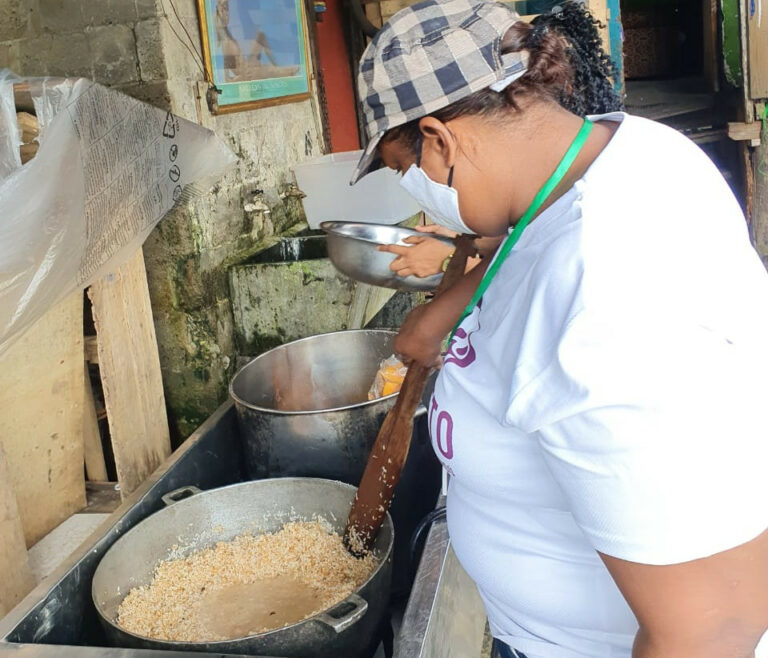
“At least three times a week, my children and I have to eat at the common pot because I do not have a stable job and my husband lost his job due to COVID-19,” says Rosa Márquez, a street vendor who sells trinkets from the doorway of a high-end wet market in Lima, Peru’s capital. ‘Olla común’ – the common pot – is a way for people in poverty to share resources: women in slum areas cook food donated by traders or shoppers. Each pot can feed more than 100 people for free, or for a nominal cost of around US$0.25.
“Other times, buyers give me some things, like vegetables or fruits, with goodwill,” says Márquez. “Even so, some days my husband and I eat just once because we prefer our children don’t go to bed with their stomachs empty. I can’t buy enough food for them at these prices.”
There are now several thousand common pots registered with government food councils in Peru, with the majority in Lima. High unemployment along with food price inflation are devastating the ten million people in Peru who live on US$3 or less per day, while in nearby Venezuela and Argentina, nominal food inflation is at 131 per cent and 71 per cent respectively.
Communities across Asia are also struggling with maintaining a sufficient diet. According to Fermin Adriano, a former Philippines undersecretary of agriculture, soaring food prices are causing widespread malnutrition and stunting among children. The Philippine government has proposed a nearly 40 per cent increase in funding for the agricultural sector in its 2023 budget, including doubling its allocation to the National Rice Program to expand fertilizer support for farmers.
While rice growing conditions remain favorable in South-East Asia for upcoming wet and dry season rice harvests, the early warning crop monitor from the intergovernmental Group on Earth Observations’ Global Agricultural Monitoring Initiative says that fuel and fertilizer shortages are likely to result in below-average yields in Sri Lanka and are causing concern in Nepal.
India announced in early September that it was restricting exports of broken rice – fragments of rice which have been broken in the field or during processing but are still edible. Within days the price of broken rice had risen by around US$20 per metric ton in East Asia and the Pacific, according to the World Bank’s September food security update.
India is the world’s largest rice exporter, but it has been hit by inflation and poor grain production. Meanwhile, a plant disease first identified in China has been detected in paddy fields in northern India, raising fears that the southern rice black-streaked dwarf virus could reduce yields by 30 to 50 per cent.
Food export bans
Restricting or banning food exports to protect local communities can have mixed results, Rob Vos from the International Food Policy Research Institute (IFPRI) tells SciDev.Net. Currently, about 17 per cent of traded food products are under some level of export restriction, he says.
“That’s big in commodity markets,” says Vos, IFPRI’s markets, trade and institutions director. “And actually the 17 per cent is more than what we saw at the height of export restrictions in the 2010-2011 crisis.”
Vos says that global prices for rice, wheat, maize and vegetable oil have been affected by export bans, while volatile market prices give rise to further speculation by traders and investors. “Importers in countries don’t know how to adjust prices or what to expect next. That typically is a bad signal,” Vos adds.
“Famine doesn’t occur overnight. It can be prevented. We have enough food around the globe to feed the world.”
Csaba Kőrösi, President of the UN General Assembly
Michael Fakhri, the UN special rapporteur on the right to food, agrees that governments should avoid introducing unilateral export bans that could further destabilize markets – with the exception of low-income states, which Fakhri says will need the option to ban exports more quickly.
A study published in Nature Food in September modelled the potential implications of reduced wheat and maize exports from Ukraine and Russia. The researchers predicted that maize prices would increase up to 4.6 per cent in the coming year, and wheat costs would rise 7.2 per cent. While they say that increased wheat and maize production in other regions could provide partial compensation for expected export declines and dampen rising prices, this would come at the cost of a rise in carbon emissions.
The world is tipped to reach a population of eight billion next month. Since the 2008 crisis, the fight against hunger has been high on the international agenda. But the slow pace of action barely reflects the potential scale of disaster, and the number of hungry and undernourished people in the world continues to grow.
At this month’s 50th session of the Committee on World Food Security, the president of the UN General Assembly, Csaba Kőrösi, told ministerial delegates that food insecurity was linked to global inequalities. He argued that the fight against hunger should rely on data and scientific evidence.
“Famine doesn’t occur overnight. It can be prevented,” Kőrösi said. “We have enough food around the globe to feed the world.”

“Every day, product prices are rising,” Adja Sokhna, a shopper at the Castor market in Dakar tells SciDev.Net. “We were told that it is because of the war between Ukraine and Russia. But what I don’t understand is the rise in the price of certain products such as vegetables that are produced in Senegal.”
Many low-income countries like Senegal operate what Vos calls a dual market – a modern supply chain operated by international agribusinesses that produce food for export, and a local food system run by traditional smallholders.
Local producers lack access to infrastructure such as cold chains, resulting in high food loss. “That could be part of the problem, the supply chain for the domestic market is much less developed than the supply chain for international markets,” Vos says.
All of this leaves families like Sokhna’s facing an uncertain future. “We have the feeling of being abandoned by the state, which does nothing to regulate prices,” she says.
Future-proofing food systems
Fakhri argues that pandemic-era policies that supported food access should become permanent programs, such as direct cash transfers, universal school meals, and support for smallholders, pastoralists, fishers and other small food producers. In a report due to be delivered to the UN General Assembly in late October, Fakhri says that country-level food hoarding should be discouraged. He says there should be transparency in national and corporate food stocks and calls on countries with large food stocks to support those in need.
Governments and agricultural research teams are considering the viability of non-fossil fuel-based fertilizers. Meanwhile, climate resilient crops and livestock breeds are the focus of research around the world. But in the short term, farmers and supply chains are largely unable to alter production patterns, says Vos.
The food that we buy and eat today was produced six months ago using fertilisers that were sourced 12 months ago. Vos points out that winter wheat crops will be sown in the northern hemisphere over the coming weeks, and alternative fertilizers will not be available. In general, farmers lack the flexibility to pivot towards new food products, says Vos – coffee trees take several years to fruit, for example, and each food needs specific equipment, inputs, climate and expertise.
Sebastian Nduva, from the non-profit International Fertilizer Development Center, says that field trials in Rwanda have revealed that the 1.5 to 2 million tons of fertilizer that will be missing from Sub-Saharan Africa’s 2022/2023 cropping season will result in losses of more than 30 million tons of grain – enough, Nduva says, to feed 60 million people.
“This is a conservative figure if we factor in the climatic risk of inadequate rainfall currently ravaging most parts of East and Southern Africa,” says Nduva, who heads up the IFDC’s AfricaFertilizer.org program, which collects and processes statistics for key fertilizer markets in Sub-Saharan Africa. “We have seen farmers in Sub-Saharan Africa opting to do their cropping without fertilization or with reduced fertilizer quantities. The price of fertilizer year-on-year has gone up more than 100 per cent in most jurisdictions and we don’t expect those levels to normalize anytime soon.”
Tensions now lie between the urgent need for immediate solutions to the growing hunger crisis, and the longer-term systemic changes critical to avert future famines.
This is a tension that the Committee on World Food Security is all too aware of. André Luzzi, a member of the committee’s civil society and indigenous peoples’ consultation group, told the ministerial segment: “We need urgent short-term measures, but they must not make the crisis worse in the long term. Simply scrambling to find new sources of fertilizer is not compatible with the demand from many producers … to end the chemical treadmill of production in the long term.”
Alvaro Lario, president of the International Fund for Agricultural Development (IFAD), said the structure of food systems and “glaring inequalities” were needed to address the current food crisis. “We must address immediate needs, but not at the cost of investing in longer term solutions. We cannot continue to move from crisis to crisis,” Lario said at the opening of the committee’s 50th session.
Small-scale producers are key to reversing alarming global trends, Lario said. Despite significant challenges, smallholders produce around one third of global food calories on less than 11 per cent of the farmland. He called for financing for climate change adaptation for small-scale farmers, infrastructure investment to help smallholders get their produce to markets, and prices that fairly compensate farmers.
And while women and girls bear the biggest brunt of the food crisis, they may also be central to future solutions, Luz Haro Guanga, executive secretary of the Network of Rural Women of Latin America and the Caribbean, points out.
“Rural women are the guardians of life, water, natural resources, seeds and healthy food,” Haro Guanga told the committee. “Although women and girls constitute 90 per cent of the producers and providers of food to their households, they are usually the ones that eat last and the least. We want to have the support of international organizations that believe, like us, that without women there is no democracy, no future, and no sustainable development.
“Every penny invested in rural women is sowing fertile land.”
____________________
Courtesy: Sci. Dev. Net (Published on October 25, 2022)
The post Global starvation looms as food price rises intensify first appeared on Sindh Courier.
]]>The post What Sri Lanka’s economic crisis looks like for women first appeared on Sindh Courier.
]]>Shefali Rafiq
COLOMBO
With inflation soaring above 64 percent, Sri Lankans have been reeling for months from an economic crisis that is jeopardizing their health, education, and basic living standards, driving many into hunger and poverty.
The skyrocketing costs of living have impacted everyone, but some marginalized communities and groups are particularly hard hit; among them women who face the double burden of trying to earn an income while also performing unpaid care work at home, for children or elderly relatives.
Sri Lanka’s sudden collapse stemmed from myriad factors, including: years of economic mismanagement; the pandemic’s double blow to tourism and remittances; and decades of forced reliance on foreign loans.
As foreign reserves hit a record low earlier this year, inflation soared, sending the costs of food, medicine, and fuel through the roof and tipping the country into a crisis marked by joblessness and rising hunger.
Lakmali Hemachandra, a labor lawyer and member of the Women’s Liberation Movement, told The New Humanitarian the main impact on workers is the depreciation of wages due to the high inflation. “It has reached a situation where they cannot even afford the basic necessities of life – food, transport, and medicine,” she said.
Local NGOs such as the Dabindu Collective – an all-women group that focuses on assisting women laborers – offer some assistance, along with a small ray of hope. But lasting change is likely only to come through systemic action, which is why protesters have been focused on changing the government, even as they are strongly repressed.
Photojournalist Shefali Rafiq travelled around the island nation in August to meet street sweepers, tea pickers, and garment workers, to find out how they – and hundreds of thousands of women like them – are faring in a range of low-income industries.
‘Look into my eyes and you will see what struggle means’
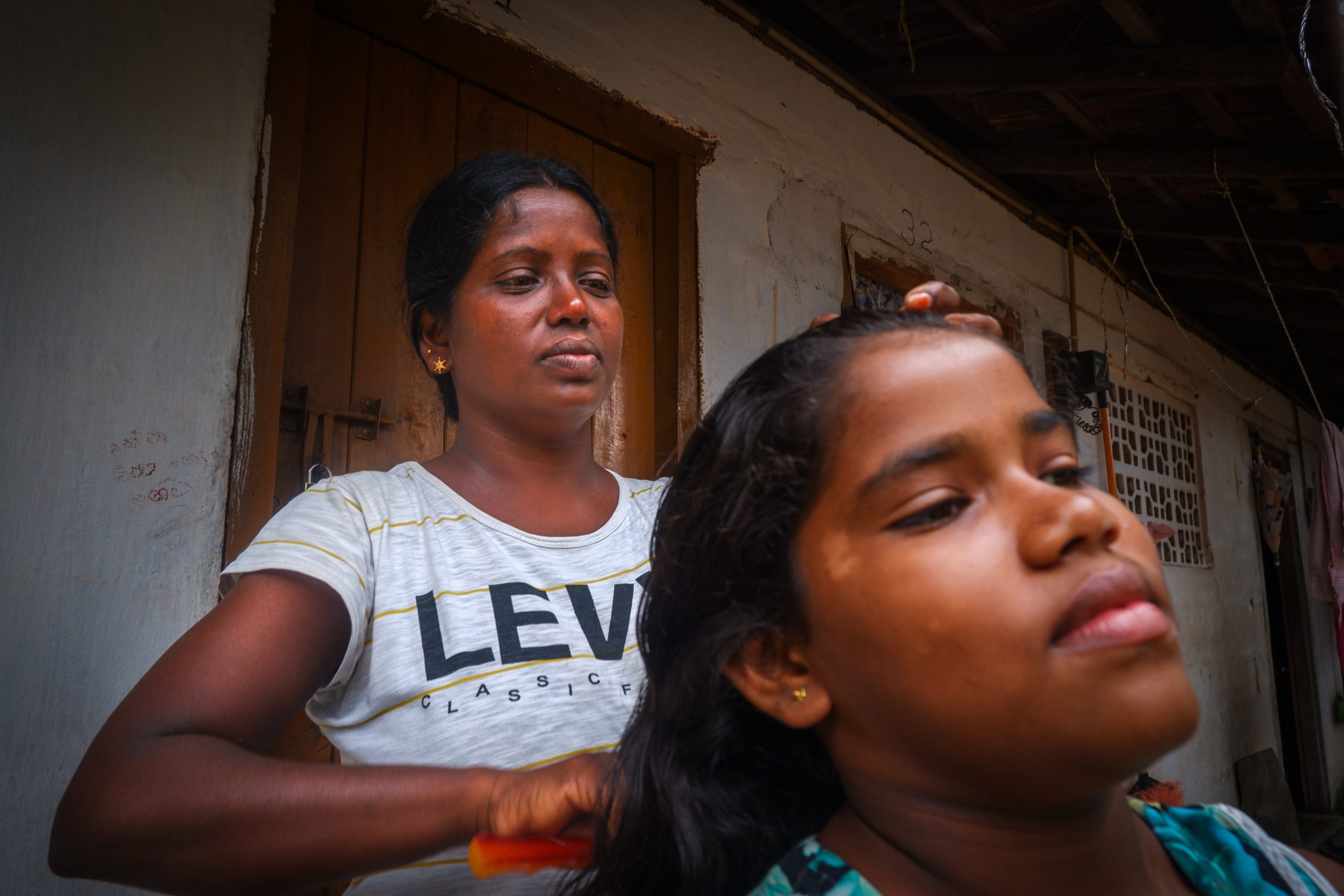 Pushpamani, a 40-year-old mother of two, has suffered a string of blows in quick succession.
Pushpamani, a 40-year-old mother of two, has suffered a string of blows in quick succession.
First, she was fired from a garment factory in 2020 when COVID-19 hit. Then, at the height of the economic crisis in early July this year, she lost another job at a different factory when it was forced to shut down.
“With difficulty, I had managed to find this new job so that I could feed my children, but it seems like there is nothing left for us – poor people – in this country,” said Pushpa, who goes by a single name.
In 2018, Pushpa’s husband left her for another woman. “For some time, he would send money, but then COVID hit and that money stopped. I was left to fend for myself and my family alone,” she explained.
“I don’t know what the crisis means to other people, but for us poor ones, it means having to sleep without a grain in our belly.”
The divorcee now lives in a boarding house along with her two children, 11-year-old Achini Varusha and a four-year-old, Sandalu Sasa.
Pushpa said she was living only for her children now. “Otherwise, the difficulties that I have in my life, no one can survive. Look into my eyes and you will see what struggle means,” she added, sobbing, as her daughter looked on.
Pushpa used to ignite the gas stove for cooking her meals but now uses a clay stove because of the scarcity of fuel. Rather than buy expensive fuel, she prefers to get food for her children. The only assistance comes from a few local NGOs that have been providing some support to women who have lost their jobs.
“Do the rich people even know there is something wrong going on in this country?” she asked. “I don’t know what the crisis means to other people, but for us poor ones, it means having to sleep without a grain in our belly.”
‘I don’t get to hug him like a mother would want to’
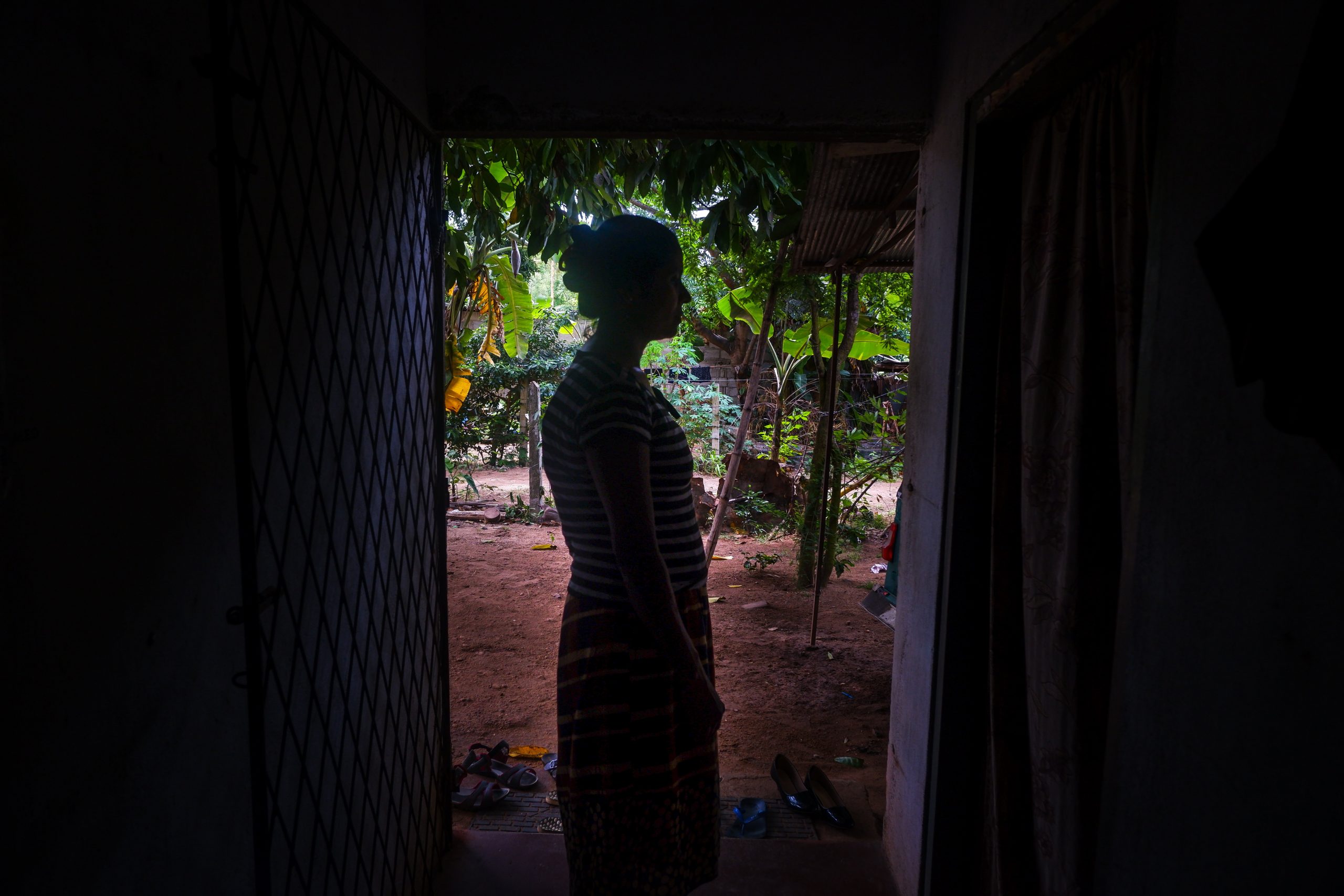 Many women are forced to eke out a living far from their home towns and villages. Often, they are divorced or single parents and therefore the sole breadwinner, leaving them the dual responsibility of looking after themselves and their children.
Many women are forced to eke out a living far from their home towns and villages. Often, they are divorced or single parents and therefore the sole breadwinner, leaving them the dual responsibility of looking after themselves and their children.
M.S. Manil, 49, is another of the some 400,000 Sri Lankans who work in the garment industry, many having faced years of labor abuse and economic hardship.
A garment worker for two decades, Manil has long been accustomed to surviving on low wages. But this economic crisis, she said, has been like “living a nightmare”.
“Even though my salary was low [before], somehow I could manage everything. But now it is extremely difficult,” she told The New Humanitarian. “The basic day-to-day items have become so costly that at times we just have to skip getting them.”
On a sunny Sunday afternoon in August, Manil sat on the lawn outside her rented room in a boarding house in Katunayake, around 35 kilometers northeast of Colombo. Sundays used to mean visits to her 26-year-old son, who lives with his aunt in Badulla district, a five-hour drive east. But that seems like a distant dream now.
Such is the impact of soaring high prices on her life that she has had to choose between having a meal or seeing her child.
“I don’t have money to travel by bus,” Manil said. “Now, I can’t do that. So I talk to him over the phone. But it doesn’t feel the same, as I don’t get to hug him like a mother would want to.”
“I hope he doesn’t fall into drugs,” she added. “Throughout the day, I fear for his safety as he is so far from me.”
‘I don’t know how I can pay the loan’
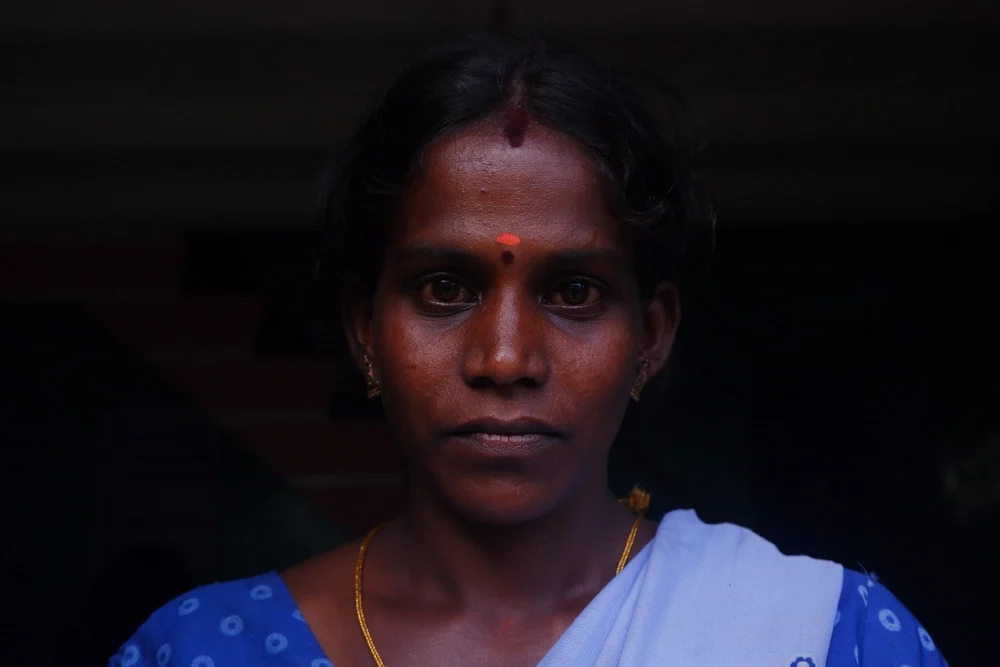
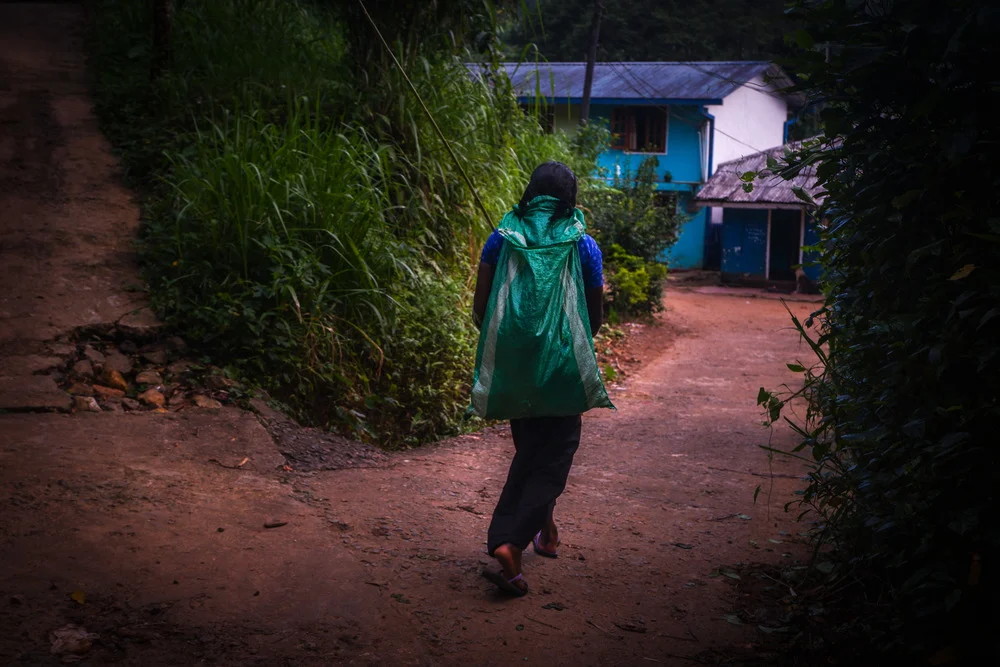 When 35-year-old Nalayini Parandamana returned home from work, she would often stop to buy some snacks for her three children. Not anymore. The rising prices now mean she eats less herself in order to feed her children.
When 35-year-old Nalayini Parandamana returned home from work, she would often stop to buy some snacks for her three children. Not anymore. The rising prices now mean she eats less herself in order to feed her children.
“If my hunger can stop my children from sleeping on an empty stomach, I will do it as long as I can,” she told The New Humanitarian.
Parandamana, who lives in a village near the town of Hatton, a four-hour drive east of Colombo, has worked in a tea plantation for the past 17 years. Wages were already extremely low before, she explained, but this crisis has “broken my backbone”.
“If my hunger can stop my children from sleeping on an empty stomach, I will do it as long as I can,”
She and her husband, a construction worker, took out a loan years ago to fund their children’s education. But they can’t repay what they owe each month, and the thought of being unable to pay back the loan is giving her sleepless nights.
Because the loan was taken from her company, her only recourse is to work more hours and cut back on more meals.
“I earn a meagre amount, of 20,000 rupees ($54.75) [a month], which isn’t even enough to feed my family,” a visibly nervous Nalayini said. “I don’t know how I can pay [back] the loan.”
All Parandamana wants is for her children to get a proper education so they don’t find themselves in a similar predicament to their parents. “I don’t know what the situation is going to be like in the future, but it seems like they might end up like us,” she added.
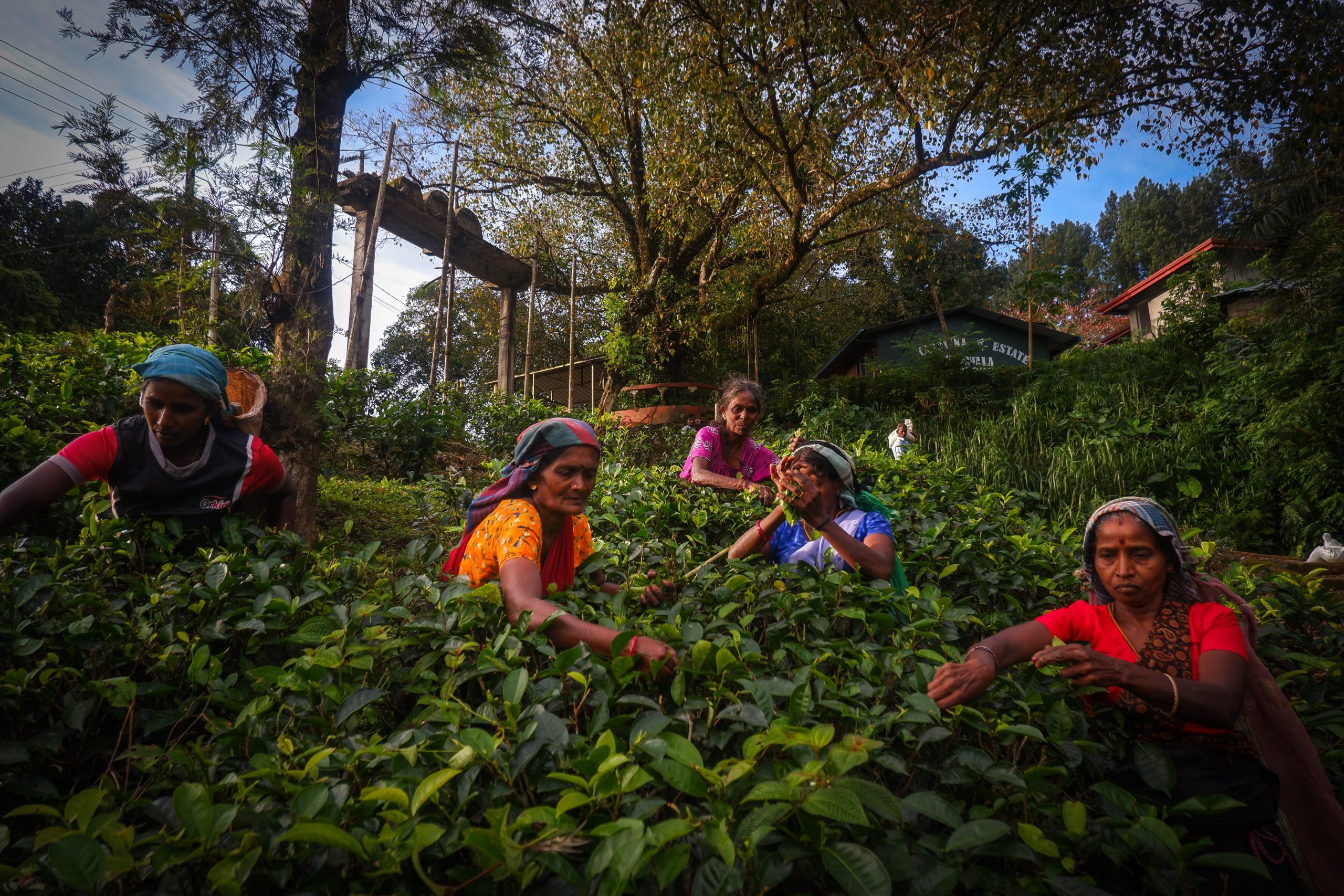 ‘We don’t see the money being passed on’
‘We don’t see the money being passed on’
Tea plantation workers’ salaries have always been very low, but at least they used to be able to work extra hours if they wanted to earn some overtime, according to Hemachandra of the Women’s Liberation Movement.
However, many factories are now operating for fewer hours as they can’t access enough fuel or electricity to keep the machinery ticking over. This just shuts off another potential lifeline for many women and their families.
“Although tea exporters made a lot of money due to the increase in the [cost of] tea, we don’t see it getting [passed on] to wages,” Hemachandra added.
‘I would have led those protests’
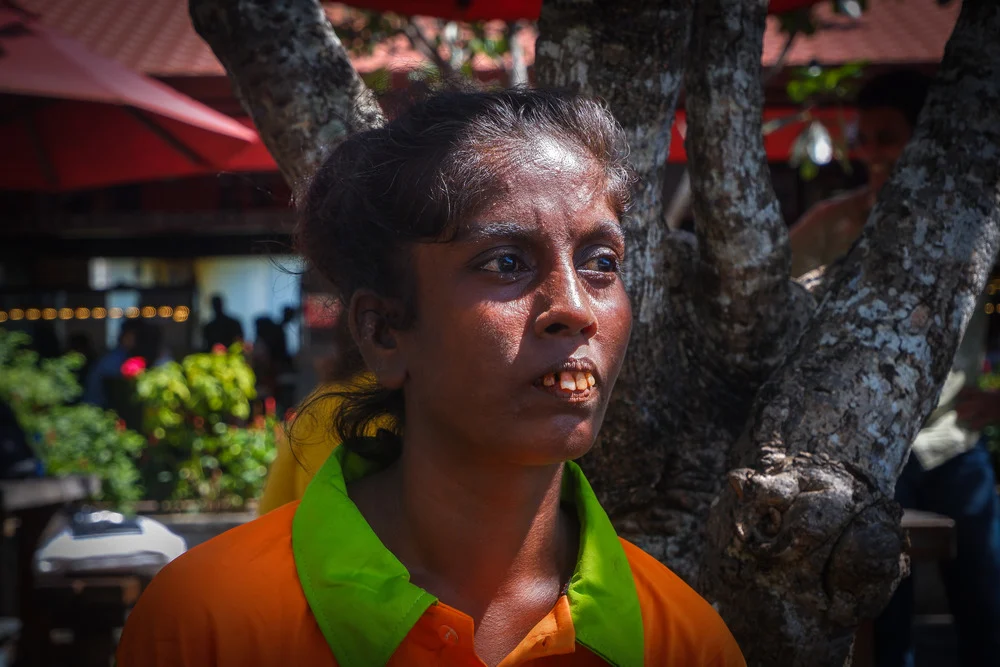
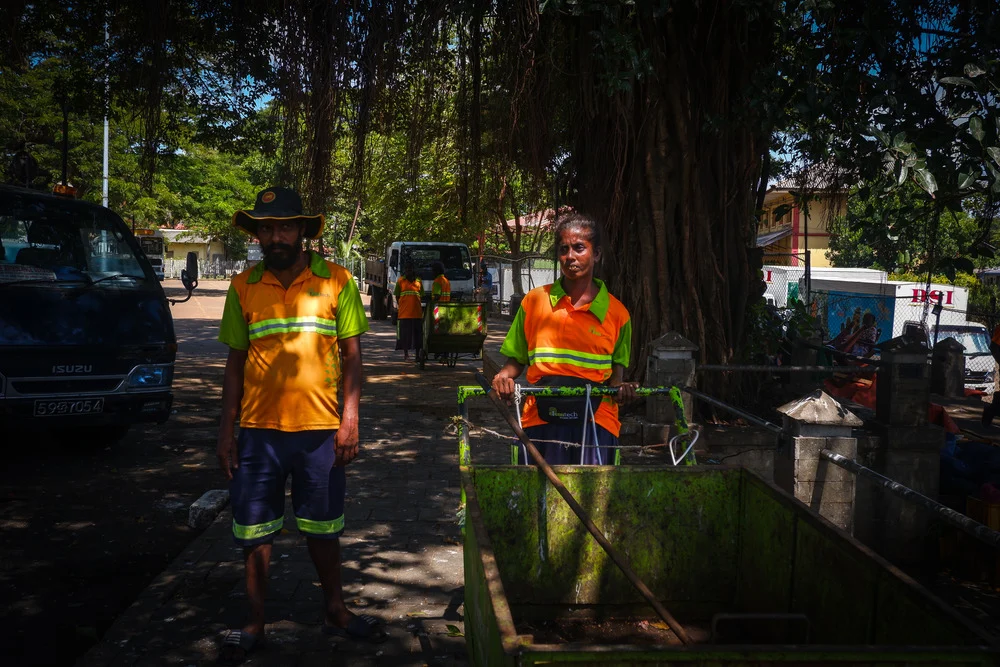 On a hot summer afternoon, The New Humanitarian met 39-year-old M. Kumareshwari sweeping a Colombo street. For this, she earns a daily wage of 1,000-1,200 rupees ($3.25). Before the crisis, it was possible to get by on this. Now, it doesn’t come close.
On a hot summer afternoon, The New Humanitarian met 39-year-old M. Kumareshwari sweeping a Colombo street. For this, she earns a daily wage of 1,000-1,200 rupees ($3.25). Before the crisis, it was possible to get by on this. Now, it doesn’t come close.
The company for which Kumareshwari works won’t allow them to attend or stage any demonstrations for higher pay. “I would have led those protests,” she said.
A former tea factory worker, Kumareshwari lost her job when the factory shut down during the pandemic.
With no other choice, she has had to survive on a job that is looked down upon by many. “I don’t care what people have to say about my work,” she said. “All I know is that this [job] provides a meal to me and my ailing parents.”
_____________________
Courtesy: The New Humanitarian
The post What Sri Lanka’s economic crisis looks like for women first appeared on Sindh Courier.
]]>